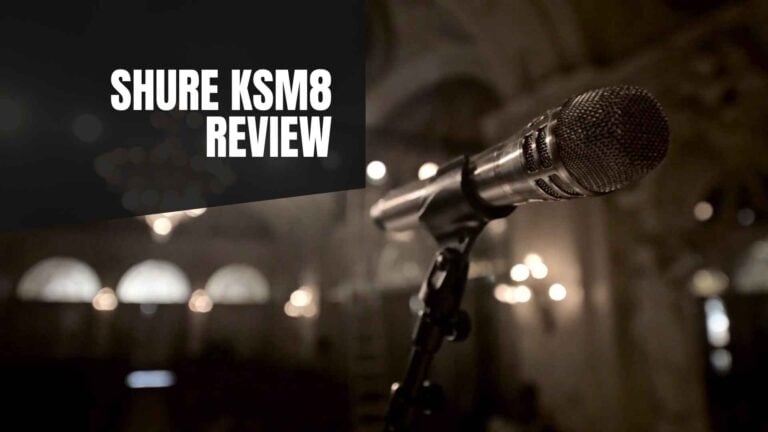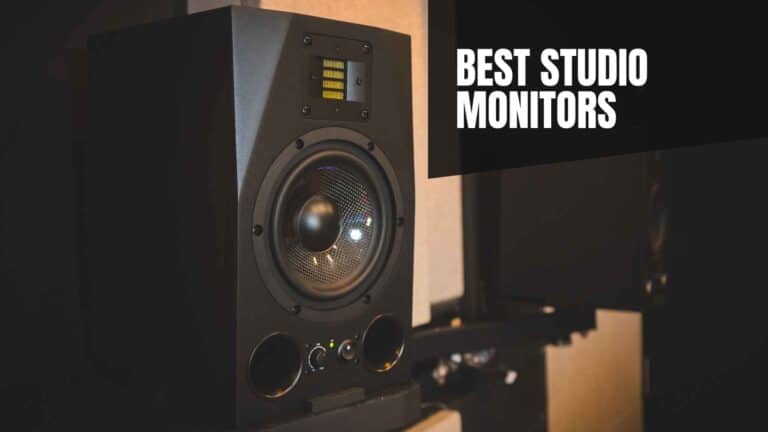Yamaha HS8 Review: The Most Popular Studio Monitors
The Yamaha HS8s are among the most reviewed and raved-about studio monitors. They are like the popular kids in high school. But unlike high school, where popularity often equates to being the loudest and most obnoxious, it’s all about clarity, balance, and precision amongst studio monitors. And in this regard, the HS8s are the valedictorians.
Remember, in music production, the best monitor is not necessarily the one that sounds the most impressive but aids you in creating the best music. So, let’s dive into this Yamaha HS8 review and ascertain if these are the right monitors for you.
At a Glance
The Yamaha HS8 studio monitors, successors to the legendary NS-10s, are a class act. They’re powerful and precise – delivering sound as honest as a mirror, reflecting every flaw in your mix.
With a robust design and impressive sound performance, they’re hard to beat in this price range. However, they demand a good-sized room with enough space and careful placement to perform at their best.
Pros
Cons
The Infamous History of the Yamaha HS Series Monitors
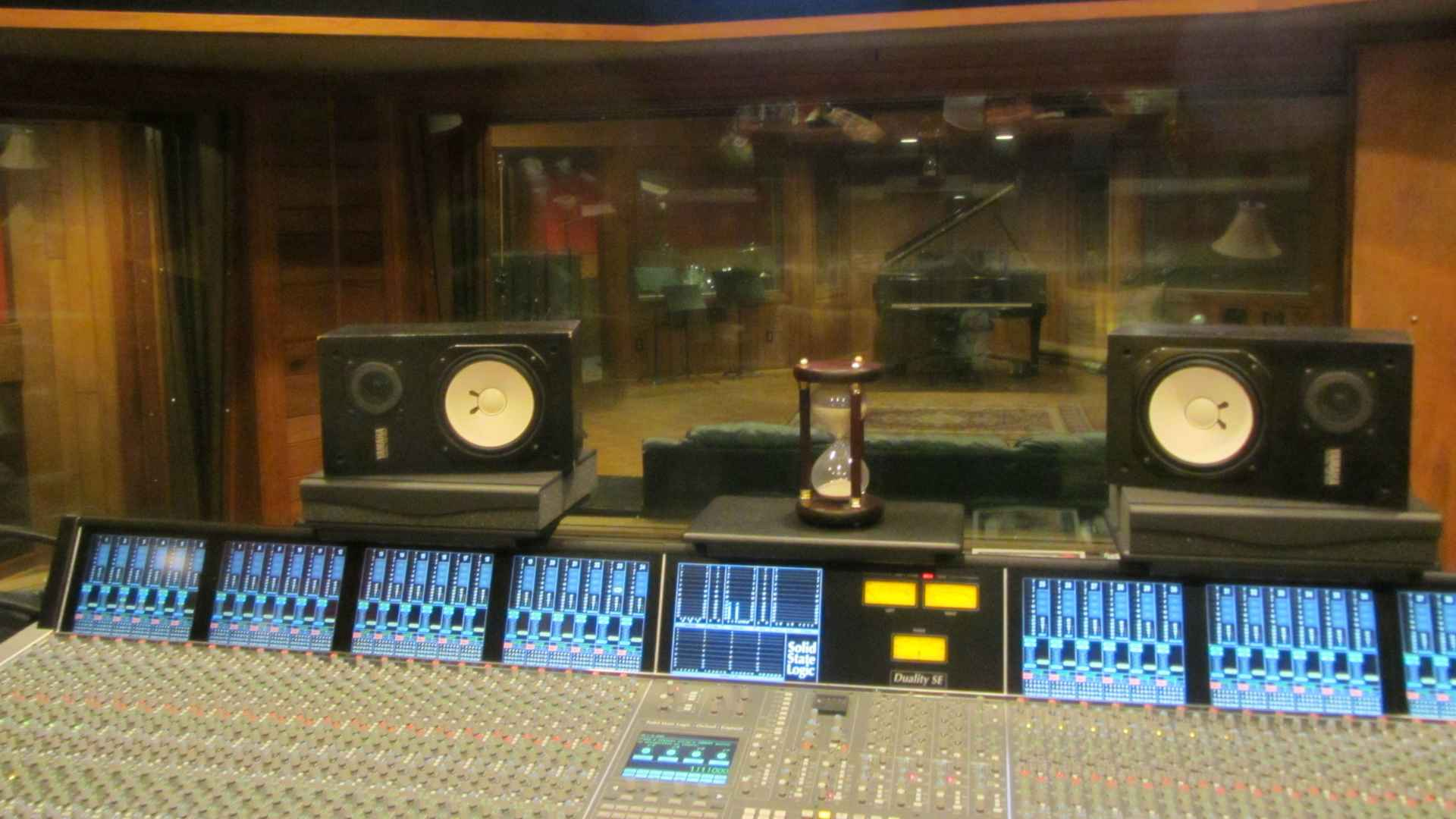
Before we start on the Yamaha HS8 review, it is paramount to hear the story of the Yamaha NS-10, and how it eventually became the Yamaha HS Series. It is a bit like the ugly duckling who grew up to be a swan. Or, to be more precise, a swan with a bit of a squawk.
The Yamaha NS-10, originally designed by Akira Nakamura in 1978, was intended to serve as a set of hi-fi bookshelf speakers. Despite its initial lack of success in the consumer market, the NS-10 found an unexpected niche within professional recording studios.
During the late 1970s, as recording studios advanced, freelance audio engineers who wanted a consistent reference point began to bring their home hi-fi speakers to work due to their portability and familiarity.
The rise of the NS-10 in the studio environment can be attributed to engineer Greg Ladanyi, who discovered them in a Tokyo control room and introduced them to the Los Angeles music scene.
This trend quickly spread among audio engineers in the music industry, including Bob Clearmountain, known for using NS-10s on many influential 1980s releases and for initiating the practice of hanging tissue paper over the tweeter to temper the harsh trebles.
Why was the Yamaha NS-10 capable of producing good mixes?
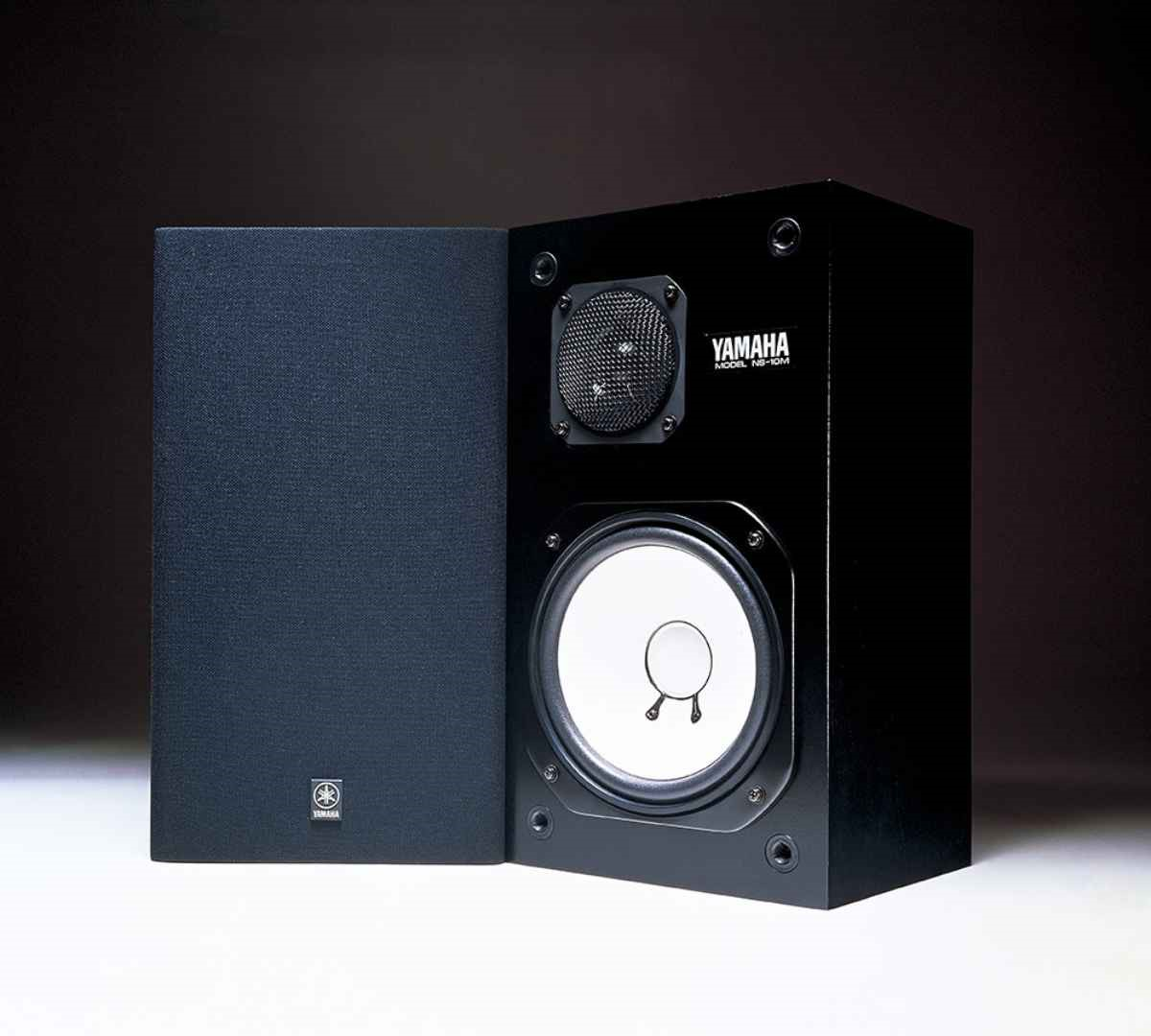
The question is, why was the Yamaha NS-10 able to produce some of the best mixes at that time despite sounding so horrible? Its frequency response is not exactly flat like modern studio monitors; the bass started to roll off below 100Hz and became barely audible around 40Hz. The high ends were harsh, and increasing the volume only made things worse, almost like listening to music through a telephone.
For one, the woofer cone was manufactured from a flat sheet of pressed pulp paper, which makes it rigid and stiff. The stiff paper cone woofer has very little resonance, stopping very soon after a transient sound is made from an instrument, for example, a snare drum, thus making the audio sound very snappy. This makes the NS-10 woofer cones very accurate in timing but also very painful to listen to, like getting a massage from a robot – technically accurate but very uncomfortable.
Also, because the NS-10 sounded so bad, audio engineers had to work extra hard to make a good mix. The common practice was to add a lot of bass and high-ends to the mix (like a smiley face on a frequency response curve), as those frequencies are barely audible on the NS-10s.

If that wasn’t enough, the Yamaha NS-10 has a boosted mid-range frequency starting around 600Hz and having an additional +5dB around 2kHz. This makes all the flaws of the instruments that sit in this frequency range become glaringly obvious such as vocals, guitars, and pianos. Hence, audio engineers will usually tackle the midrange issues first.
Moving on to the Yamaha HS Series

In 2001, the NS-10 was discontinued due to the difficulty of sourcing pulp paper. But in 2006, Yamaha released the HS series reference monitors, which built upon the legacy of the NS-10. With its iconic white cone, the HS series has become one of the most widely used home studio monitors. This series is a significant advancement in its design that ensures accurate sound reproduction and a more pleasant listening experience.
Design and Build Quality
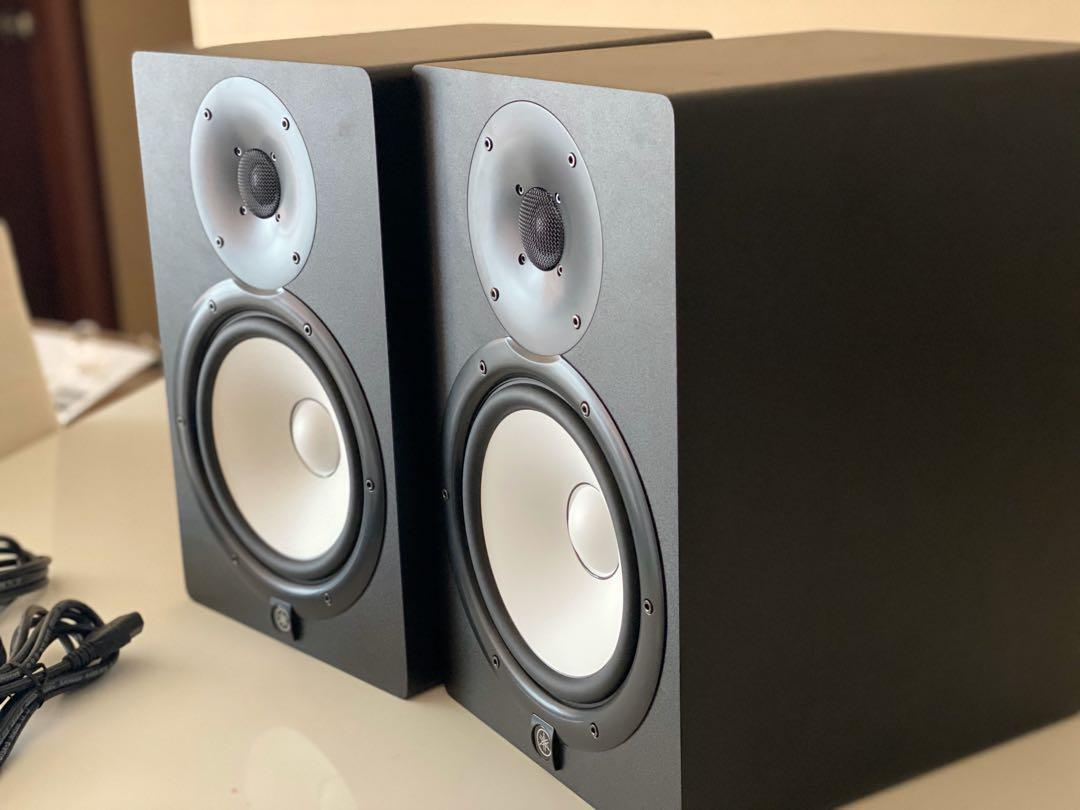
The Yamaha HS8 studio monitor has a robust enclosure constructed from a dense MDF board. This not only ensures resilience against accidental knocks but also contributes to reducing resonance, thereby enhancing sound quality.
The cabinet also uses a three-way mitered joint, a design element borrowed from Yamaha’s piano design expertise. This feature further enhances resonance reduction, producing a cleaner, more precise sound quality.
Also, as the largest model in the full range of the HS Series, the Yamaha HS8 studio monitor weighs in at 22.5 lbs (10.2 kg), a full 10 lbs heavier than the NS-10! While the NS-10 was known for its portability, the same cannot be said for the HS8!
The Yamaha HS8 studio monitor has a simple and elegant design characterized by a textured finish, which cleverly conceals fingerprint marks, maintaining its pristine appearance over time.
The front panel features the iconic white cone (no longer made of paper!) and a centrally positioned tweeter protected by a metal grill. The Yamaha logo, located below the woofer, illuminates in white when the Yamaha HS8 studio monitor is switched on, adding a nice touch of elegance to its robust persona.
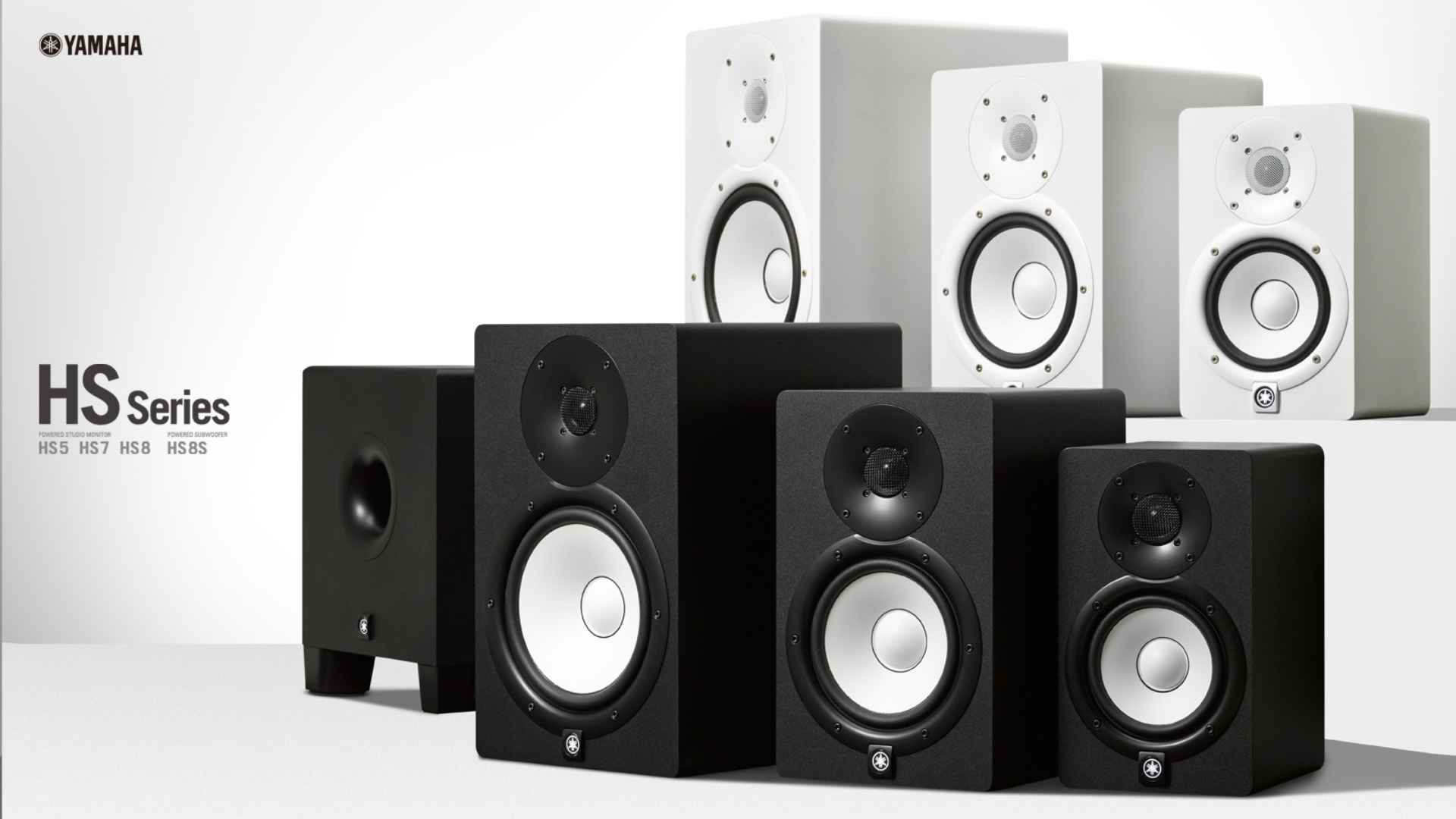
The Yamaha HS8 studio monitor is available in black and white, catering to various aesthetic preferences. The black variant seamlessly integrates into any home studio setup, while the white variant makes a striking visual statement. I personally prefer the black version due to its professional look and the contrast the white cones provide against its dark body. Furthermore, it does evoke a sense of nostalgia, reminiscent of the legendary Yamaha NS-10.
Unfortunately, there are no mounting points or screws on the Yamaha HS8 studio monitor. You’ll have to get the Yahama HS8i, a mountable option that will cost an extra $50-$60 per monitor.
Sound Quality

Unlike the NS-10s, the Yamaha HS8s are active monitors with a bi-amped design. The first thing you’ll notice when you fire up the Yahama HS8 is its deep and powerful low-end. It’s like a sumo wrestler doing a belly flop into a pool – it delivers a meaty thump with every beat of the bass that will make your heart skip.
If you own a pair of the smaller HS5s, you might find the bass somewhat lacking and may have supplemented it with a subwoofer. However, with the Yamaha HS8 studio monitor, a subwoofer is unnecessary.
However, it’s not just the bass that makes the Yamaha HS8 studio monitor sound quality good. The mids sound warm and full-bodied, while the high frequencies are bright, crisp, and detailed.
The balance across the frequencies is solid, with a nice flat response without coloration. This means that if you’re mixing and mastering your music, you’ll be able to hear where your mix needs work, and every change you make can be heard clearly.
However, the trebles may sound somewhat harsh to some users, potentially causing ear fatigue during extended mixing sessions. Also, since it is a powerful studio speaker, it might not be suitable for small rooms or smaller spaces.
One of the more intangible benefits of the Yamaha HS8 studio monitor is its widespread use and familiar sonic character to many music producers.
Imagine you’re working on a mix with another producer. If he owns a pair of Yamaha HS8s, you can be confident that he’ll hear exactly the same thing as you when he receives your mix. Moreover, if both of you are working in the same studio and are familiar with how the Yamaha HS8 studio monitor sounds, you will be on the same page from the get-go.
Rear Panel
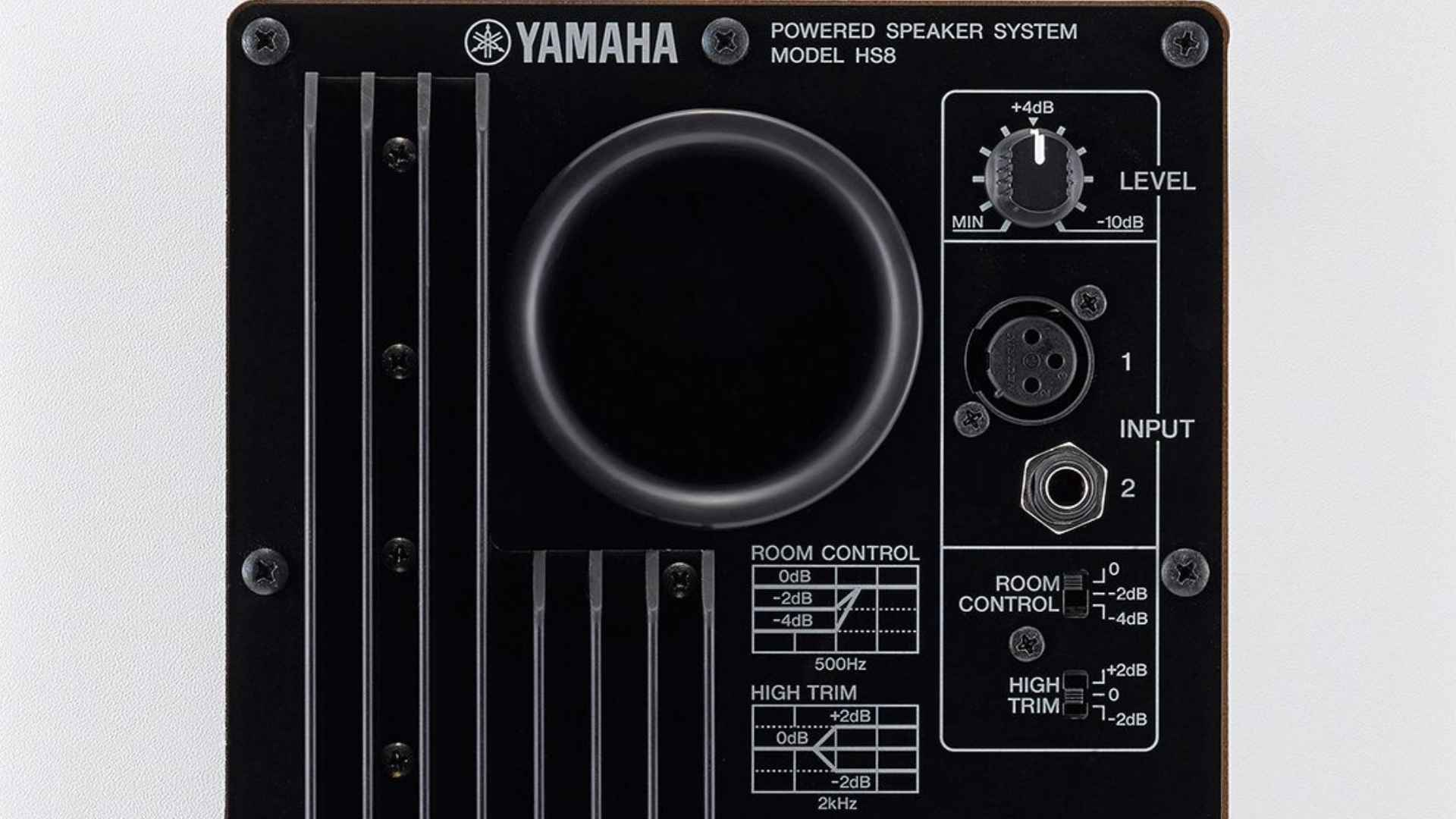
The Yamaha HS8 speaker has two types of connectors for versatile connectivity: a balanced XLR type and a TRS jack. Both can handle balanced and unbalanced signals, enabling you to connect various audio equipment. This flexibility in connectivity ensures that the Yamaha HS8 speaker can easily integrate into any studio setup.
The Yamaha HS8 speaker features basic EQ settings for room correction, including the ‘Room Control’ switch and ‘High Trim’ switches. These switches are accompanied by simple diagrams, providing an easy-to-understand visual representation of their functions.
The room control switch lets you attenuate the exaggerated low-end when the Yamaha speakers are placed close to walls or corners. With settings at 0, -2, and -4 dB, you can adjust the bass response to match the characteristics of your room, ensuring accurate monitoring.
The high-trim switch control allows you to adjust the monitor’s high-frequency response. With options of +2 dB, 0, and -2 dB, you can fine-tune the treble to your liking, making it an invaluable tool for achieving the perfect sound balance.
The rear panel of the Yamaha HS8 speaker also features a Level control knob, which adjusts the speaker’s volume. The labels on this knob might initially appear confusing to beginners, as -10dB is indicated as the maximum volume, and +4dB is marked at the center.
However, these labels refer to the level of the incoming signal. A +4dB label indicates a higher incoming signal from a professional device, such as an audio interface, while -10dB corresponds to a lower incoming signal from a consumer audio device, such as a computer. Therefore, the volume must be increased to achieve a healthy signal level when using consumer audio devices. Speaking of audio interfaces, we have recommendations for affordable ones if you’re looking to pair them with your studio monitors.
There are also cooling fins to help with heat dissipation of the built-in amps, which is quite uncommon for other speakers in the market.
The Yamaha HS8 speaker uses a rear bass port. Hence you should be careful not to line up the Yamaha speakers perpendicularly and close to a front wall to prevent strong bass resonances. If there’s too much reverberation in the room, you’ll need to ensure that your studio has the proper acoustic treatment using acoustic panels and bass traps; otherwise, you’ll still get a muddied mix, no matter how good your studio monitors are.
Final Verdict
The Yamaha HS8 studio monitors are a worthy successor to the legendary NS-10s. They offer an impressive blend of design, build quality, and sound quality that is hard to match in this price range.
The HS8s are not just about delivering powerful, great sound but also accurate and honest sound. This is a crucial feature for those who are serious about their music production. The HS8s are unforgiving; they will not mask the flaws in your mix, but expose them, pushing you to perfect your craft.
However, they are not without their limitations. The HS8s require a good-sized room for optimal performance, and placement near walls can lead to bass build-up and distortion. Additionally, their frequency response, while still excellent for monitors in this price range, may not be as expansive as Yamaha claims.
In conclusion, if you’re an electronic music producer or a singer/songwriter looking for a monitor that will help you identify problems with your mixes quickly, the Yamaha HS8 speakers are an excellent choice. However, if you still want more options before deciding, check out our recommendations for other high-quality studio monitors.
Remember, the best studio monitor is not the one that sounds the most impressive, but the one that helps you make the best music. And in that regard, the Yamaha HS8 speakers certainly deliver.
Production Information
Specifications
- Power Configuration: Bi-amped
- LF Driver Size: Eight-inch woofer
- HF Driver Size: One-inch dome tweeter
- Total Power: 120W
- LF Driver Power Amp: 75W
- HF Driver Power Amp: 45W
- Frequency Response: 38Hz-30kHz
- Crossover Frequency: 2kHz
- Input Types: 1 x XLR, 1 x 1/4″ TRS
- Weight: 21.6 lbs (10.2 Kg)
Features
- Room control and high-trim controls for getting optimal room response
- Large magnets in an Advanced Magnetic Circuit design

Yamaha HS8





